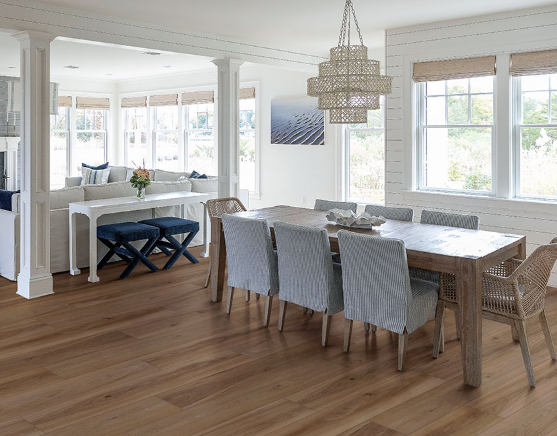
ˇˇ
"Tariff impacts remain a fluid situation, making
a definitive judgment on the impact hard,ˇ± reports Truist.
ˇ°Regardless, the flooring industry has one of the higher
concentrations of imported goods. The sweeping nature of the
announcement has changed our view of the impact versus just
duties on China and Mexico. LVT is the most imported product and
selling price inflation could erode its value and the deflation
it has caused. These changes could be a long-term positive for
domestic producers like Mohawk. Import heavy retailer Floor &
Decor will most likely shift to more domestic but the name is
not at a competitive disadvantage to large peers. Short-term the
tariffs are mostly negative.
ˇ°Evaluating the tariffs announced on April 2nd is going to be a
long-term process, and we believe making a definitive statement
is very difficult. Foreign country reactions, shipping rates and
currencies are just of a few of the items that could change the
impact. Not to mention the changes on consumer behavior with
higher prices and/or changing interest rates. Finally, importers
have built inventory ahead of this change, so any pricing moves
may take several months to realize. Below we have a look at the
impact the situation on the flooring market as it stands now. We
suspect the facts and our views may change.
ˇ°Flooring Market Sees Imports in Most Areasˇˇ The lead up to the
implementation of tariffs has had investors looking to see what
areas of Building Product are most exposed. Appliances are often
mentioned as importing many goods, but we also believe that
flooring is one of the leaders. In 2023, roughly 55% of flooring
units were imported, with imported goods seen to a certain
extent in all areas. Note the second largest contributor, in our
view, is area rugs which are somewhat of a different industry
than installed flooring. The number would be lower excluding
this.
ˇ°ˇ.. But LVT and Ceramic Have the Highest Penetration. While
seen in all flooring, LVT and ceramic have the highest
penetrations at roughly 64% of ceramic tile volume and 81% of
LVT volume. The reasons for the high imports is different for
both, in our view. LVT comes out of Asia and has been difficult
to replicate on a domestic production basis. Ceramic tile is
produced in virtually every country in the world (it is
worldwide the most used flooring material) and thus multiple
avenues are available.
ˇ°Most LVT Comes From China & Vietnam Which Will See Heavy
Tariffs. These two countries have long dominated the production
of LVT, with Vietnam gaining substantial market share over China
as production has shifted. Coupled with South Korea, substantial
tariffs will be placed on almost 90% of all imported product
currently. We believe shifting sourcing will take some time, as
few other countries have the substantial infrastructure needed.ˇ±
Source:
floordaily.net

